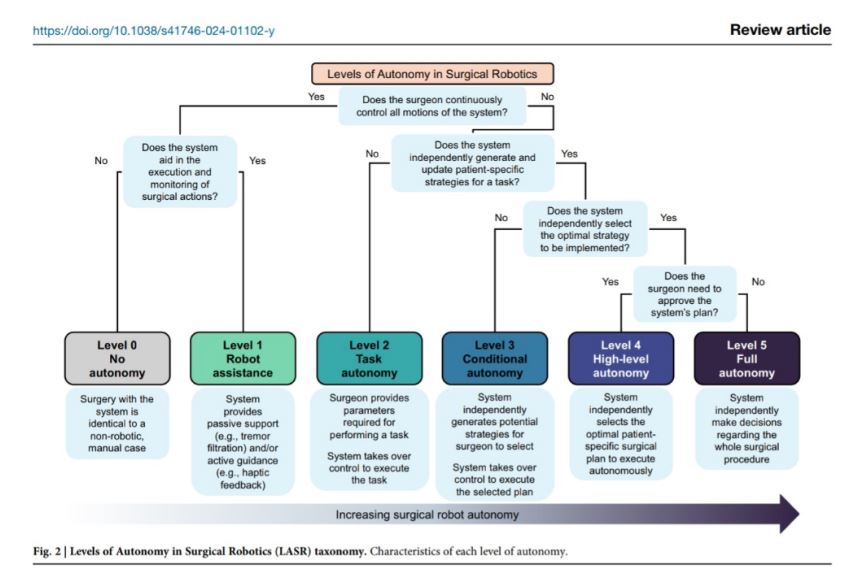Available At
View Location

Autonomy means to give freedom of decision making. Lots of buzz you can hear nowadays of Robotics, machine based learning and so on about AI.
Medical field is also not untouched with aura created with Ai and robotics. Many medical fields like pathology, radiology, endoscopic evaluations have reached far in use of AI based learning and machines based task. In other word we can say they have reached level 3 to level 4 autonomy in day to day diagnostic workup.
When comes to surgical or can say therapeutic interventions to be done by robotic. It focuses solely on technical metrics while failing to discuss practical developmental benchmarks , however human-robot interactions critical for ensuring patient and surgeon safety as the field advances. Since 2015, the FDA has advocated for the term “robotically- assisted surgical devices” instead of “surgical robots” to emphasize that all cleared systems have no robotic autonomy, as they require the surgeon's direct and continuous control to move and activate surgical instruments. By this definition, the surgeon is entirely responsible for the safety of the procedure and is expected to maintain proper training across different models of robotically-assisted surgical devices.
Who is entirely responsible for patient safety is big question before robotically-assisted surgical devices upgraded to level 3 or 4 autonomy. [ please refer image 1 for level of automy in robotics]
Next time will touch upon level of surgical skill levels of surgeon using existing robotically assisted surgical devices in clinical use.
Resource material : https://doi.org/10.1038/ s41746-024-01102-y